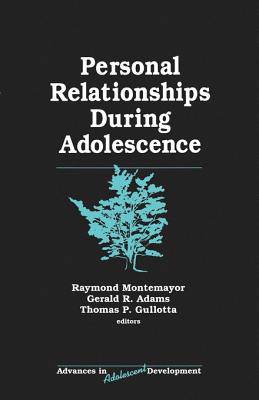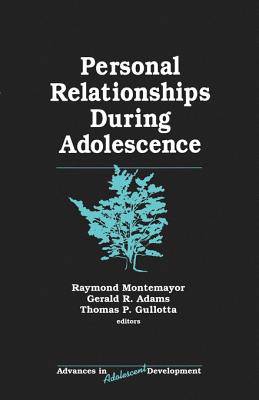
- Afhalen na 1 uur in een winkel met voorraad
- Gratis thuislevering in België vanaf € 30
- Ruim aanbod met 7 miljoen producten
- Afhalen na 1 uur in een winkel met voorraad
- Gratis thuislevering in België vanaf € 30
- Ruim aanbod met 7 miljoen producten
Zoeken
Personal Relationships During Adolescence
€ 160,45
+ 320 punten
Omschrijving
Educators will find much useful information in Personal Relationships During Adolescence. It offers insights for program and curriculum planning and suggests numerous topics for stimulating discussions with teens. It also raises provocative issues about how the developmental needs of youth can be served more effectively by families, communities, and educators. --Family Life Educator "Personal relationships During Adolescence marks the launching of adolescent personal relationships as a field. Rather than a cohesive or exhaustive book, this book is a collection of high-quality chapters. The book holds the potential to define personal relations as an integrated line of study that serves to develop theory and research beyond contextual boundaries." Journal of Marriage and the Family The contributors to Personal Relationships During Adolescence analyze the ways in which critical interpersonal bonds are forged and maintained by presenting the current works of leading scholars and professionals. The relationships discussed are as diverse as the distinguished authors studying them: The parent-teen connection; the impact of cultural diversity on teens′ social development; same-sex friends as well as opposite-sex friends during adolescence; heterosexual, bisexual, gay and lesbian romantic relationships; adolescent crowds (or cliques); and relationships involving non-kin adults. The authors also explore conceptual issues that cut across relationships and the problem of integrating the views of both individuals in a relationship. Researchers and students in the areas of adolescence, close relationships, social and personality development, and family relationships will find this a must-read book.
Specificaties
Betrokkenen
- Uitgeverij:
Inhoud
- Aantal bladzijden:
- 256
- Taal:
- Engels
- Reeks:
- Reeksnummer:
- nr. 6
Eigenschappen
- Productcode (EAN):
- 9780803956810
- Verschijningsdatum:
- 1/12/1994
- Uitvoering:
- Paperback
- Formaat:
- Trade paperback (VS)
- Afmetingen:
- 142 mm x 218 mm
- Gewicht:
- 385 g

Alleen bij Standaard Boekhandel
+ 320 punten op je klantenkaart van Standaard Boekhandel
Beoordelingen
We publiceren alleen reviews die voldoen aan de voorwaarden voor reviews. Bekijk onze voorwaarden voor reviews.










